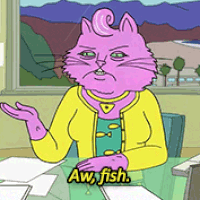Kepler
Cornell Big Red
MLB, through general arrogance and greed of its ownership, might end up lucking into their best outcome, cancellation of the entire season.
From your keys to god's ears.
MLB, through general arrogance and greed of its ownership, might end up lucking into their best outcome, cancellation of the entire season.
Apparently both sides have hammered things out, and believe it or not, we actually have a deal.

Not exactly a surprise, but Minor League Baseball is canceled for 2020. MLB officially notified MiLB it will not be providing players to the clubs.
Tell me again how every argument for canceling MiLB does not directly refute the as-sine decision to open MLB?
Minor League Teams make 10's of thousands of dollars...
Major League Teams make 10's of millions of dollars...
Speaking of millions of dollary-doos...
HAPPY BOBBY BONILLA DAY!
Agreeing to give 1.2 million per year over 25 years instead of $5.9 right away because they thought Bernie Madoff would turn that $5.9 million into over $30 million goes way past just looking dumb.
If you go to FanGraphs they did a painful point by point analysis of the deal showing that the net effect was neutral for the Mets and positive for Bonilla's feelings. That is the operational definition of a good deal.
The math works, I dunno how. If you care about it go hunting.
I am all for the annual joke, though. Anything that embarrasses the Ponzis is God's work.
Mathematically, the deal should have been a great deal for the Mets and a really bad deal negotiated by Bonilla's agent, with a couple of provisos.
The deal was good for the Mets and bad for Bonilla because of the time value of money. The Mets didn't have to pay Bonilla his first payment for 10 years. Thus, they had the luxury of investing the money and building up the returns for 10 years without having to make a payment. So, instead of paying him say $6 million in 2001, they pay him $1.2 million a year starting in 2011. If they take that $6 million and invest it, by the time they start making payments they might have $12-14 million in their fund, and when the series of $1.2 million dollar payments were done, they'd still have cash left over.
Bonilla, on the other hand, could have taken the $6 million in 2001 and invested it. 35 years later, if you compared that sum with what he would get if he took $1.2 million per year for 25 years and invested it, he'd have been much better off taking the lump sum up front.
The two provisos are these. First, it's a good deal only if you can invest the money and get a decent return. From 2001 until the recession in about 2008 the Mets probably could have gotten a real good return. From then until they started paying Bonilla in 2011, not as great.
Second, don't invest your money with some guy telling you he'll do better than 6-8%. He's right, he'll to better, but you won't.
Mathematically, the deal should have been a great deal for the Mets and a really bad deal negotiated by Bonilla's agent, with a couple of provisos.
The deal was good for the Mets and bad for Bonilla because of the time value of money. The Mets didn't have to pay Bonilla his first payment for 10 years. Thus, they had the luxury of investing the money and building up the returns for 10 years without having to make a payment. So, instead of paying him say $6 million in 2001, they pay him $1.2 million a year starting in 2011. If they take that $6 million and invest it, by the time they start making payments they might have $12-14 million in their fund, and when the series of $1.2 million dollar payments were done, they'd still have cash left over.
Bonilla, on the other hand, could have taken the $6 million in 2001 and invested it. 35 years later, if you compared that sum with what he would get if he took $1.2 million per year for 25 years and invested it, he'd have been much better off taking the lump sum up front.
The two provisos are these. First, it's a good deal only if you can invest the money and get a decent return. From 2001 until the recession in about 2008 the Mets probably could have gotten a real good return. From then until they started paying Bonilla in 2011, not as great.
Second, don't invest your money with some guy telling you he'll do better than 6-8%. He's right, he'll to better, but you won't.
